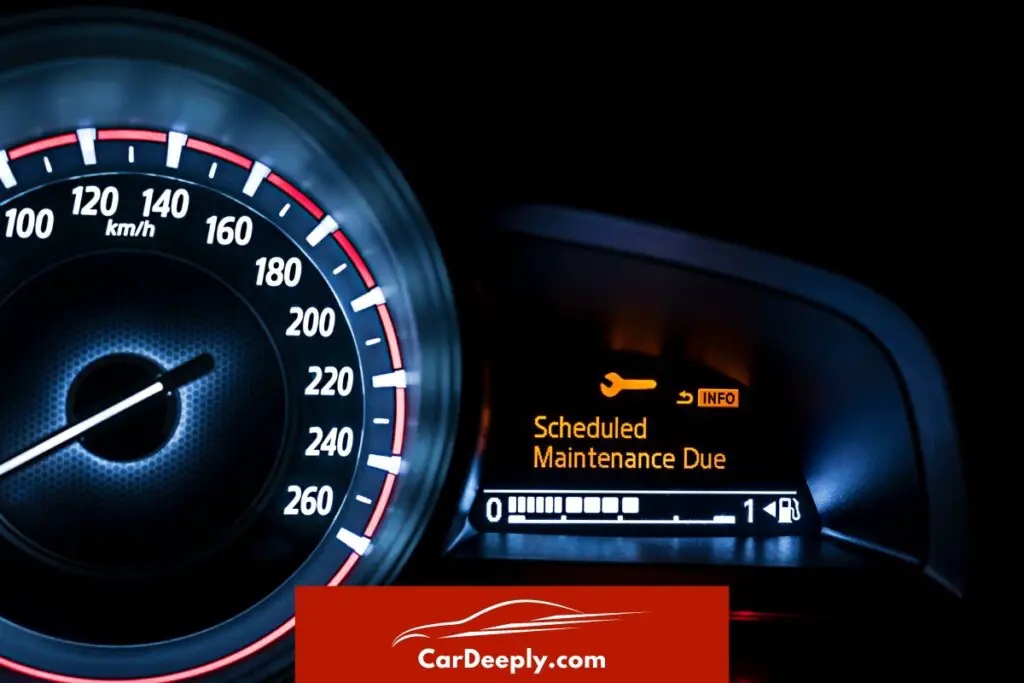Navigating the intricacies of the F150 in brake service mode can be daunting for many. But, with the proper guidance, you can master it with ease.
Over the years, countless vehicle owners have faced challenges with this mode, often leading to unnecessary expenses and wasted time. But you’re about to bypass those pitfalls.
In this article, you will get the step-by-step activation and deactivation process, you will discover common mistakes and how to avoid them, and you will gain insights into troubleshooting common issues.
Let’s see what the brake service mode is all about.
Advertising links are marked with *. We receive a small commission on sales, nothing changes for you.
Key Takeaways

- The Electronic Parking Brake (EPB) system offers enhanced safety and convenience compared to traditional handbrakes.
- During rear brake maintenance, activating and deactivating the brake service mode is crucial to prevent accidental EPB engagement.
- Regular inspections and maintenance of the EPB system ensure longevity and optimal performance.
- The F150’s EPB system provides clear dashboard indicators for activation, deactivation, and potential malfunctions.
- Troubleshooting common EPB issues, like the “Parking Brake Malfunction” message, is essential for vehicle safety.
Delving Deep into the Electronic Parking Brake (EPB) System
The Genesis of the Parking Brake System
The parking brake system has witnessed a significant transformation over the years. Initially, vehicles were equipped with manual handbrakes, which required physical strength to engage and disengage.
With technological advancements, the automotive industry introduced the Electronic Parking Brake (EPB) system, marking a pivotal shift in vehicle safety and convenience.
- From Hydraulic to Electronic: The transition wasn’t merely a technological upgrade. It was a response to the need for enhanced safety, ease of use, and space optimization within the vehicle cabin.
- Ford’s Foray into EPB: Ford, always at the forefront of innovation, embraced this change, incorporating EPB in many of its models, including the iconic F150.
Mechanics Behind the Electronic Parking Brake
At its core, the EPB system is a marvel of modern engineering. Unlike the traditional handbrake, which relies on a mechanical linkage, the EPB operates electronically.
- Functionality: With just a button push, the EPB engages or disengages, ensuring the vehicle remains stationary when parked.
- Components: The system comprises an electronic control unit, actuators, and sensors. These components work in tandem to provide real-time feedback and ensure optimal performance.
- Safety First: In scenarios where the vehicle’s battery is depleted, the EPB system has built-in mechanisms to remain engaged, ensuring the vehicle’s safety.
Advantages of the Electronic Parking Brake System
The introduction of the EPB system wasn’t just about modernization. It brought along a slew of benefits catering to drivers and automotive designers.
- Space Optimization: Without a handbrake lever, vehicle interiors could be designed more ergonomically, providing additional storage spaces or enhanced aesthetics.
- Enhanced Safety: The EPB system offers automatic engagement, ensuring the vehicle remains stationary even if the driver forgets to engage the brake.
- Fuel Efficiency and Emission Reduction: With precise control, the EPB system can contribute to improved fuel efficiency and reduced emissions, especially during start-stop scenarios in traffic. Fuel economy is something everyone worries about, so learning about how EPB improves your fuel efficiency is a must!
Incorporating the EPB System in the F150
The Ford F150, known for its robustness and reliability, seamlessly integrated the EPB system into its design.
- User-Friendly Interface: The F150’s EPB system is designed with the user in mind. A simple button push activates or deactivates the system, with clear indicators on the dashboard.
- Maintenance and Care: The EPB system requires periodic checks and maintenance like any other vehicle component. Regular inspections ensure the system’s longevity and optimal performance.
- Safety Protocols: Ford has incorporated multiple safety protocols within the F150’s EPB system. From automatic engagement in case of battery failure to real-time feedback mechanisms, the F150 ensures the driver and vehicle’s safety at all times.
By understanding the intricacies of the EPB system, especially in the context of the Ford F150, drivers can ensure they utilize this feature to its fullest potential, ensuring safety, convenience, and optimal vehicle performance.
Mastering the Activation and Deactivation of the Brake Service Mode
The Imperative of Service Mode
Before diving into the specifics, it’s essential to grasp the significance of the brake service mode. This mode is not just a fancy feature but a critical component when performing rear brake jobs on your F150.
- Safety First: Engaging the brake service mode ensures that the Electronic Parking Brake (EPB) system doesn’t activate accidentally during maintenance, which could lead to injuries or damage.
- Optimal Maintenance: By deactivating the EPB system, mechanics can access the rear brakes without hindrance, ensuring thorough inspection and repair.
Activating the Brake Service Mode: A Step-by-Step Guide
Activating the brake service mode in the F150 is straightforward, but attention to detail is crucial.
- Start the Vehicle: Ensure the vehicle is stationary with the ignition turned on.
- Engage the Brake Pedal: Firmly press down on the brake pedal.
- Activate EPB Button: Press the EPB button in the vehicle’s center console while holding the brake pedal.
- Dashboard Indicators: The dashboard will display a message indicating the brake service mode’s activation. Release the EPB button once the message appears.
Deactivating the Brake Service Mode: Ensuring Safety Post-Maintenance
Post-maintenance, it’s equally crucial to deactivate the brake service mode to ensure the vehicle’s safety.
- Start the Vehicle: With the vehicle stationary, turn on the ignition.
- Engage the Brake Pedal: Press down on the brake pedal firmly.
- Deactivate EPB Button: Press and hold the EPB button while holding the brake pedal.
- Dashboard Confirmation: The dashboard will display a message confirming the brake service mode’s deactivation. Release the EPB button once you see the message.
Troubleshooting Common Issues and Ensuring Optimal Performance
Even with the most advanced systems, occasional hiccups are inevitable. Recognizing and addressing these issues promptly can save time and avoid potential hazards.
- Parking Brake Malfunction Message: If your dashboard displays this message, it indicates a potential issue with the EPB system. It’s advisable to consult the vehicle’s manual or seek professional assistance.
- Manual Release: In scenarios where the EPB system doesn’t disengage, the F150 is equipped with a manual release mechanism. However, this should be used as a last resort, preferably under expert guidance.
- Resetting the System: A system reset might be required if the brake service mode doesn’t activate or deactivate as intended. This involves disconnecting the vehicle’s battery for a few minutes and reconnecting it. Always ensure the vehicle is off and in a safe location before attempting a reset.
By mastering the activation and deactivation of the brake service mode, F150 owners can ensure optimal performance and safety of their vehicles. Regular maintenance and a thorough understanding of the EPB system can enhance the vehicle’s lifespan and ensure a smooth driving experience.
Frequently Asked Questions
What is the primary purpose of the Electronic Parking Brake (EPB) system?
The EPB system replaces traditional handbrakes, offering enhanced safety and convenience. With a simple button push, the EPB engages or disengages, ensuring the vehicle remains stationary when parked. This electronic system provides more precise control and space optimization within the vehicle and contributes to improved fuel efficiency.
Are there any specific maintenance requirements for the EPB system?
Like any other vehicle component, the EPB system requires periodic checks and maintenance. Regular inspections ensure the system’s longevity and optimal performance. It’s advisable to consult the vehicle’s manual or seek professional assistance for detailed maintenance guidelines.
How does the EPB system contribute to fuel efficiency?
The EPB system offers precise control, especially during start-stop scenarios in traffic. This precision can reduce wear and tear on the brakes, improving fuel efficiency and reducing emissions.
Is it safe to drive the vehicle if the “Parking Brake Malfunction” message appears?
No, if the dashboard displays the “Parking Brake Malfunction” message, it indicates a potential issue with the EPB system. It’s crucial to address this issue promptly to ensure safety. Consult the vehicle’s manual or seek professional assistance immediately.
Can the EPB system be manually overridden?
Yes, the F150 is equipped with a manual release mechanism for the EPB system. However, this should be used as a last resort, preferably under expert guidance. Understanding the manual release process and its implications is essential to ensure safety.

Luna Meschiari is a full-blooded car nut who is well known to local garages, as each article is meticulously researched and peppered with the latest piece of information. Guess what car she’s driving right now? A RAV4 2021 Hybrid. But her heart also sleeps for pickups like the F-150. Get to know Luna better on the about us page.
Advertising links are marked with *. We receive a small commission on sales, nothing changes for you.
